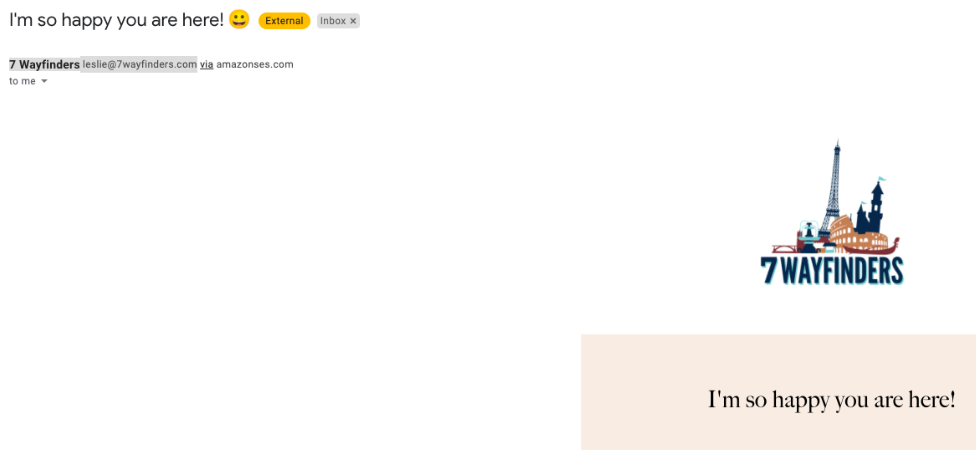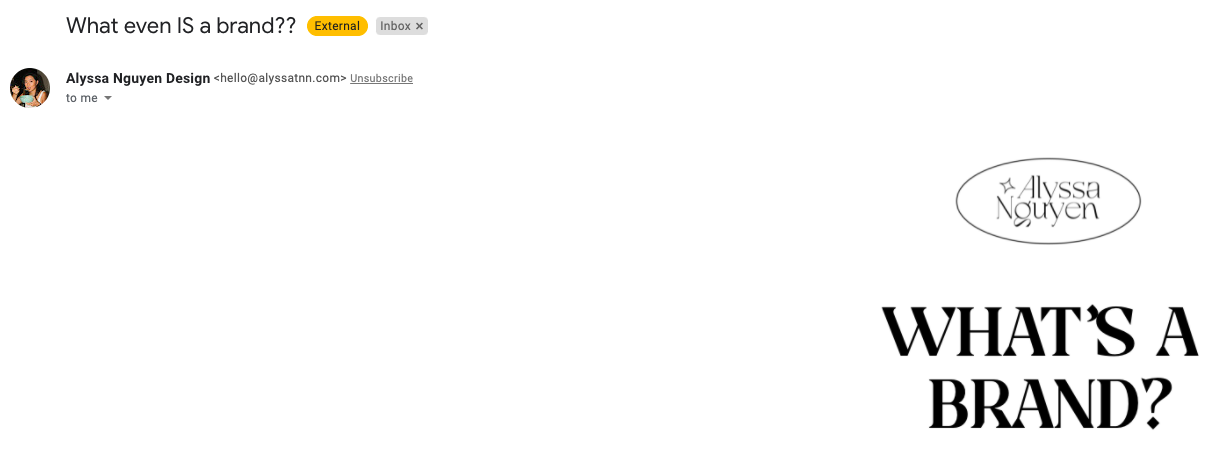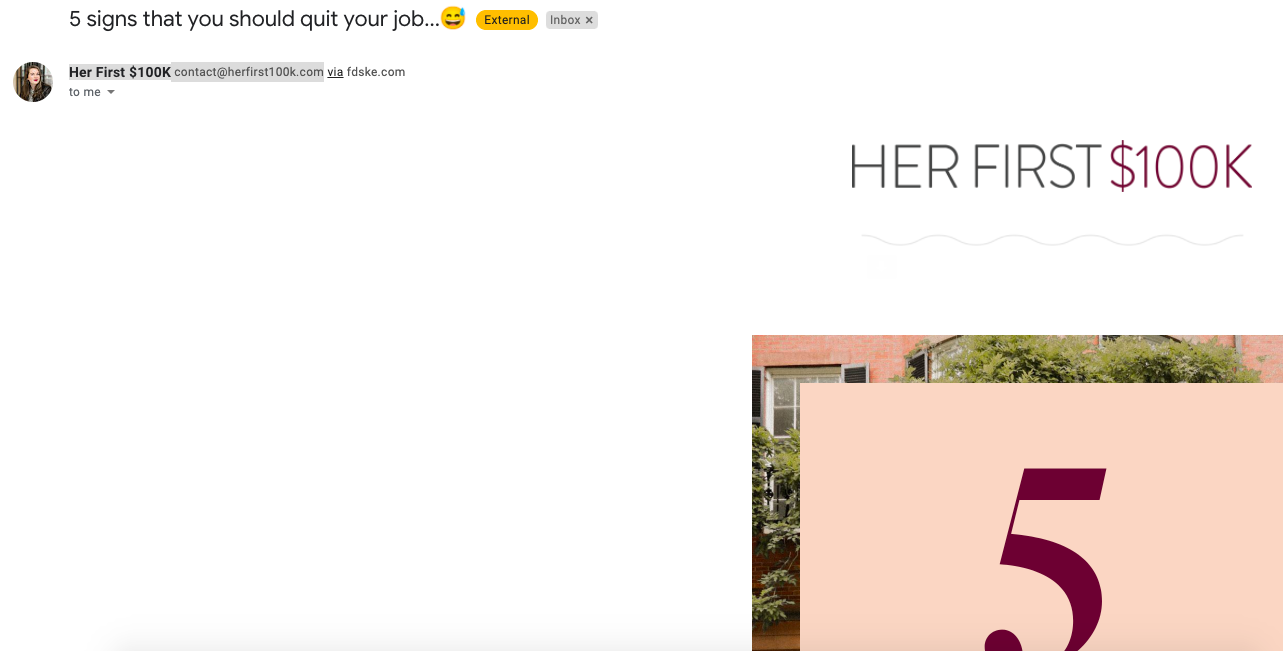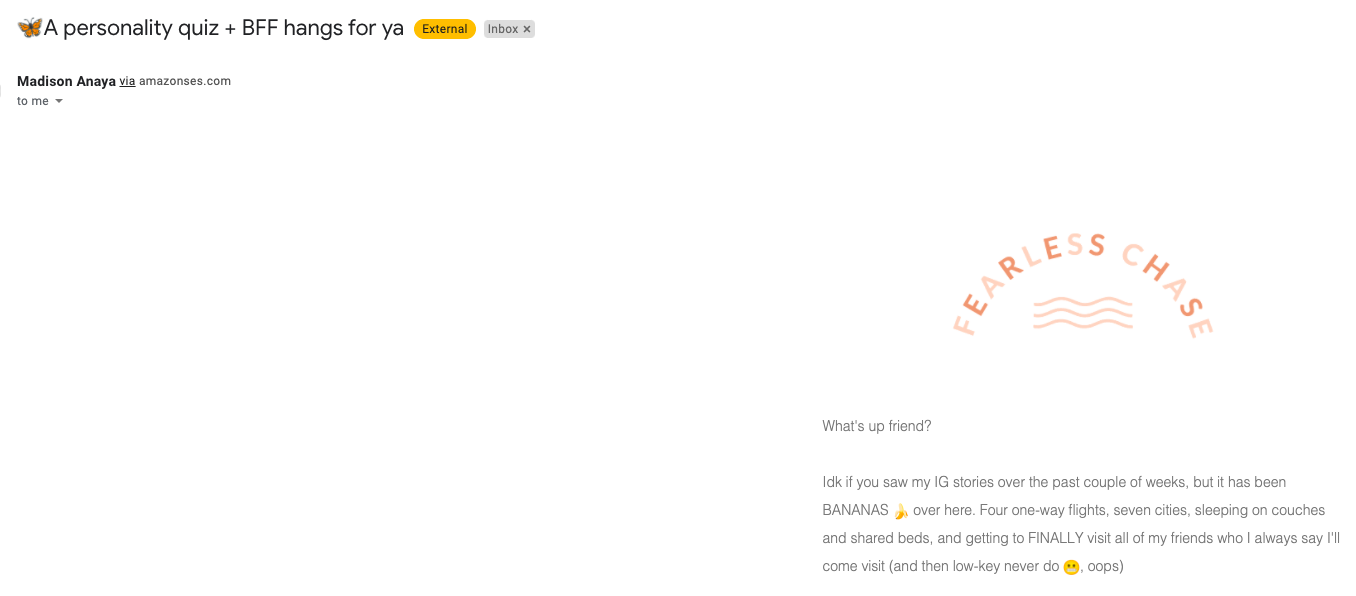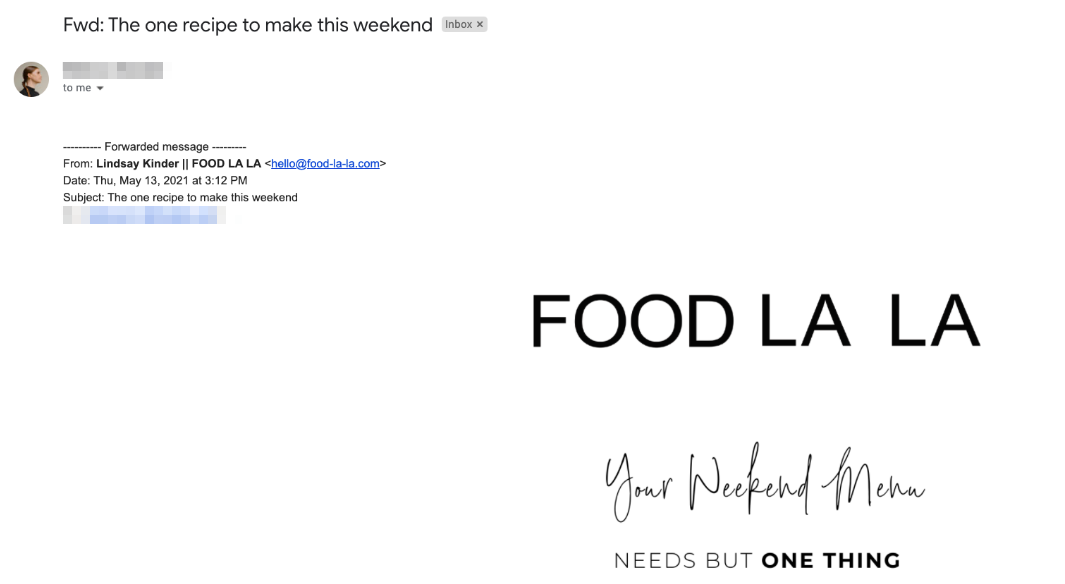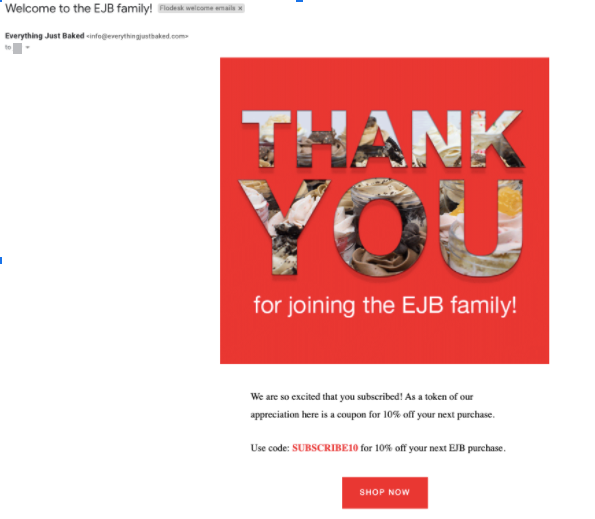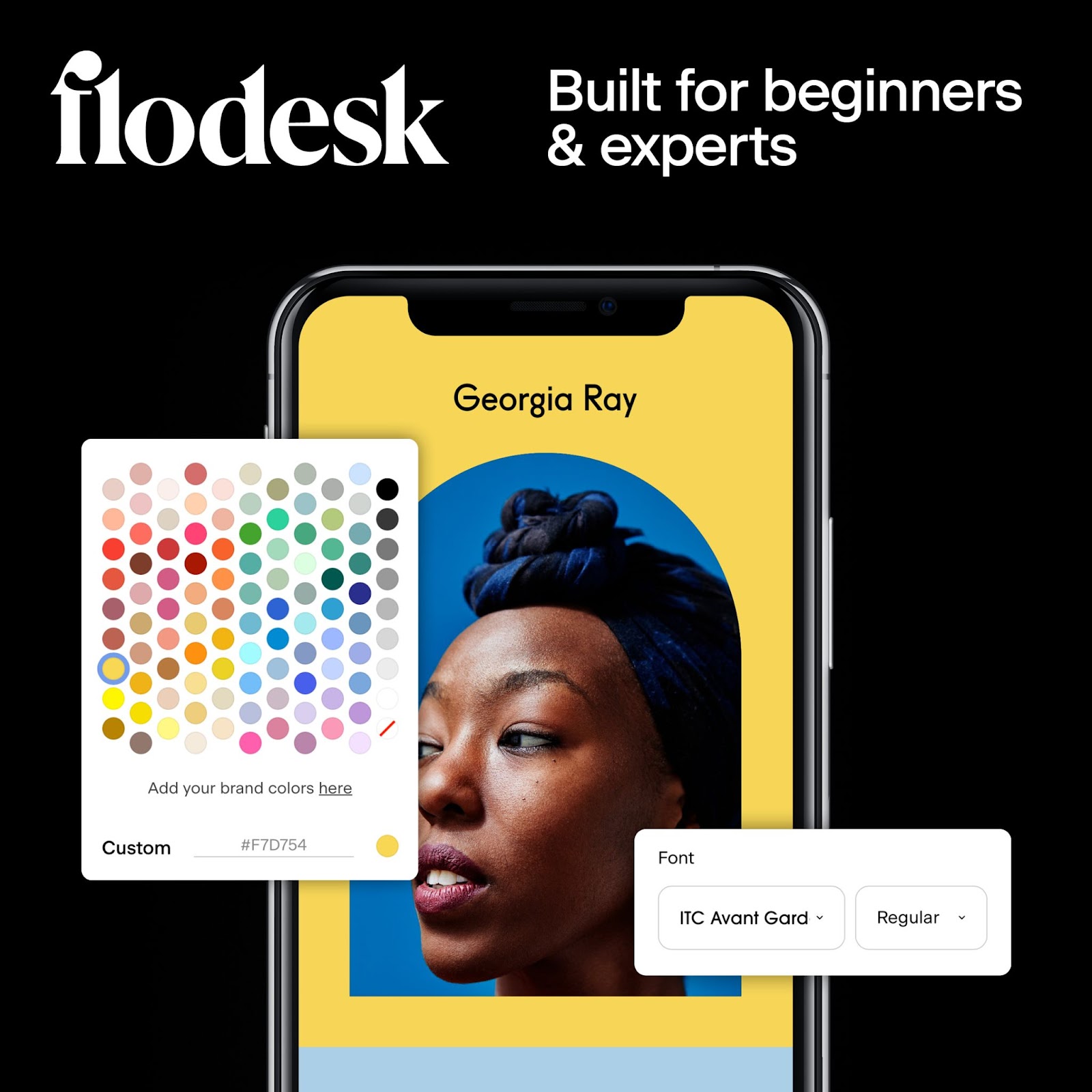11 Best Examples of Welcome Email Subject Lines (& Tips to Write Your Own)
Table of Contents Jump to:
Jump to:
Table of contents
Welcome emails are like the golden goose of email marketing—they can hook customers and lay the groundwork for a long, profitable relationship. And while there are a lot of ingredients that go into crafting a successful welcome email, from intentional design to killer copywriting, it all starts with the subject line.
Here’s why subject lines are so important:
- They’re the only thing people see when they first receive your email in their inbox.
- They’re often the primary reason customers open your emails—47% of recipients choose to open emails based on the subject line alone.
- They can keep your emails out of the dreaded spam folder—69% of recipients report email as spam based on the subject line alone.
Get unlimited email sends & subscribers with Flodesk
We’ll never increase pricing because your email list is growing
What makes a great subject line?
A great subject line grabs the attention of your new subscribers, giving them a reason to open your email. In fact, 47% of recipients choose to open emails based on the subject line alone.
We’ll go into more detail on this later, but here’s a quick overview of best practices for writing great subject lines:
- Get straight to the point
- Lead with value
- Pique curiosity
- Personalize it
- Run A/B testing
- Avoid looking like spam
11 examples of the best welcome email subject lines
To get your creative juices flowing, here are some examples of the best welcome email subject lines out there.
1. The “exclusive offer” welcome email subject line
Nearly a quarter of all email subscribers (23.5%) join your list just to get access to an exclusive offer or discount code. That’s why using one in your email subject line is so effective—especially in cases where that’s what your subscribers came for in the first place.
Plus, it builds trust by showing subscribers that you’re going to follow through because you’re promising them discounts and actually delivering on that promise. Take the example above from Go To Bed. Their welcome email subject line says, “About that discount I promised…”
Not only does this speak to the exclusive offer but it leaves just enough mystery to encourage readers to click through. For example, if the subject line read, “Here’s your coupon for 10% off,” the reader might just file it away for later and then forget about it.
Examples of exclusive offer welcome email subject lines:
- You’re in! Time to unwrap your goodies!
- A little something to say thanks…
- Open up! Your special offer’s inside.
2. The “from a real person” welcome email subject line
A subject line that reads like it’s from a real, live person is effective because it stands out in a sea of generic corporate emails. It’s also one of the first steps in getting your readers to like you.
While that might sound a bit too middle school-ish, it’s actually an important psychological trigger you can use to connect with email subscribers. As it turns out, us humans like to think our decisions are logical but in reality, we tend to say yes to people we know and like.
The subject line above from Leslie at 7Wayfinders is a great example of this. She kicks things off with a simple but warm message written in the first person: “I’m so happy you are here!” Her name is also shown in the “from” email address (leslie@7wayfinders.com), adding to the real person vibe.
Examples of ways to sound like a real person in your welcome email subject line:
- I’m so excited you signed up!
- Thanks for joining! I just know you’re going to fit in here!
- Hey girl! I can’t wait to show you around!
3. The “open-ended question” welcome email subject line
Using an open-ended question in your subject line is effective because it piques curiosity. Questions also feel incomplete on their own, nudging readers to open the email to get the answer.
Of course, not all questions are created equal. The best questions are about something your readers can relate to or want to know more about.
Take the example above from Alyssa Nguyen Design Studio. Her subject line reads, “What even IS a brand?” This question is bound to resonate with her readers considering she offers brand building for women of color and women-owned businesses.
By asking a question about exactly the thing your target audience is grappling with, you not only pique their curiosity enough to open the email but you create a deeper connection with them as well. It creates a feeling of being understood, of finally being seen.
Examples of open-ended questions to use in your welcome email subject line:
- If gray is really out, what’s in?
- What’s up with the junk folder anyway?
- Will kids actually eat this stuff?
4. The “we have something in common” welcome email subject line
Leading off with something you have in common with your readers is another effective way to make an early connection. And it’s easy to do. After all, your readers subscribed for a reason—they’ve already demonstrated an interest in your product, service or subject.
Now, all you have to do is put it into words. As you can see in the image above, Natalie Franke does an excellent job of this with her subject line, “If you love beautiful emails, this is for you.” —an interest she’s likely to have in common with her audience of small business entrepreneurs.
She also does a good job of incorporating graphics into her email to keep engagement going after the subject line. To learn how to do this, check out, How to Use Email Marketing Graphics to Create Attention-Grabbing Emails on the Flodesk blog.
Examples of “we have something in common” email subject lines:
- I KNOW you love to travel—me too!
- Welcome fellow foodie! What’s for dinner?
- I love that you love this too.
5. The “FOMO” welcome email subject line
Using FOMO (or fear of missing out) in your welcome email subject line is effective because us humans really don’t like to miss out on a good thing. Especially young humans. In fact, about 69% of millennials experience FOMO on a daily, if not hourly basis.
From a marketing perspective, tapping into FOMO is effective because it creates a sense of urgency. Take the subject line above from Gabby Pinkerton as an example. She taps into FOMO by saying, “Did you MISS the design summit? READ THIS!”
Subscribers who missed the summit (either knowingly or unknowingly) will want to click through this email to make sure they don’t miss out on something good.
There’s one caveat to this strategy though: use it sparingly. Otherwise, you could run into a “boy who cried wolf” scenario. For example, if you’re always saying “last chance” and then sending the same offer the next day, readers won’t be motivated by your claims of urgency anymore.
Examples of ways to use FOMO in your welcome email subject line:
- Earn double points today only!
- Last chance to sign up for (insert your product/service here)! Only a few spots left!
- 5 new design trends you don’t want to miss!
Get unlimited email sends & subscribers with Flodesk
We’ll never increase pricing because your email list is growing
6. The “number-based” welcome email subject line
Using numbers in your welcome email subject line is effective because numbers engage more readers. In fact, studies show that using numbers increases engagement anywhere from 15% (Moz study) to 206% (CoSchedule study).
One reason numbers work so well is that they make content more scannable. When there’s a number in the subject line, for example, the reader is able to scan and process the information faster.
That said, all numbers are not created equal. According to The Write Direction, small numbers are more digestible than large ones and odd numbers are seen as more authentic. As you can see above, Tori Dunlap, founder of Her First 100k, uses both of these guidelines in the subject line, “5 signs that you should quit your job…”.
Examples of ways to use numbers in your welcome email subject line:
- Welcome! Here are 3 insider tips to get you started.
- 5 delicious recipes for the weekend!
- 7 ways to style those new wide leg jeans…
7. The “emoji” welcome email subject line
How did we ever express ourselves without emojis? Just one little image and everything is clear. Fortunately, the power of the emoji isn’t confined to text messaging or social media. Emoji’s can (and should) be used in welcome email subject lines too.
In fact, in the Flodesk University Course, How to Write Click-Worthy Email Subject Lines, Emilie Steinmann advises readers to use emojis to up the cool factor. “The statistics on this are constantly changing,” Steinmann says. “But it is true that when you add a couple of emojis here and there, it can make you feel a lot more approachable, and your emails just feel a lot more casual and friendly.”
Madison Anaya of The Fearless Chase is a master at sprinkling emoji’s throughout her emails to connect with readers. Her subject line in the email shown above, for example, kicks things off with a butterfly emoji. Plus, she includes a few more in the body of the email to carry through her casual tone.
Examples of ways to use emojis in your welcome email subject line:
- We’re so glad you joined! 😊
- 🙋 Got a question? Just ask!
- Yay! You’re in! 🙌 💃
8. The “curated recommendation” welcome email subject line
Subject lines that curate recommendations are effective because they are perceived as time savers—and in today’s busy world, anything that saves time is considered valuable.
Take the subject line above from Food La La: “The one recipe to make this weekend”. This line works well because what it’s really saying to the reader is, “Forget about figuring out what to cook. Forget about scrolling endlessly through recipes. We already did that for you. All you have to do is open this one little email…”
And that’s pretty hard to resist.
Examples of curated list welcome email subject lines:
- The only song you need to listen to all week.
- The top 3 news stories to read today.
- The one design trend you should follow in 2022.
9. The “freebie” welcome email subject line
Freebies are so effective in subject lines because people just can’t resist free stuff—a phenomenon observed in a famous experiment involving chocolate. In the experiment, participants were asked to choose between spending 26 cents on a luxury Lindt chocolate truffle or spending one cent on a Hershey’s chocolate kiss.
When presented with this choice, about half of the participants chose the truffle and half chose the Hershey’s Kiss. However, when the price of each item was lowered by one cent (making the truffle 25 cents and the Kiss free), the vast majority of participants chose the Hershey’s Kiss—even though the price difference was exactly the same.
Plus, many times subscribers join email lists specifically to get access to something free. If this is the case, they’re likely waiting for the email to come through and are looking forward to receiving the free product or service.
We love how Calvina Photography makes her freebie front and center in her subject line.
10. The “welcome to the community” subject line
Another type of subject line that’s effective is one that welcomes the reader into a community or group. Take the line above from Everything Just Baked, for example: “Welcome to the EJB family.”
These community-based subject lines are effective because they play into human nature and the desire to belong.
11. The “let’s make it official” welcome email subject line
The “let’s make it official” subject line is similar to the community-based approach but with a twist. Take the example above from Jessica at Indigo Day. She leads off her welcome email with the subject line, “Hey you! You’re officially an Indigoer! 💖 .“
This goes a step beyond welcoming the reader to your group by telling them they’ve officially become something. In Jessica’s case, for example, her subscribers have become “Indigoers.”
Get unlimited email sends & subscribers with Flodesk
We’ll never increase pricing because your email list is growing
How to write a great subject line for your welcome email
Now it’s time to dig further into those best practices we touched on in the beginning. Here are 3 tips to write a great subject line for your welcome email—even if this is your first newsletter.
And if this is your first go at email marketing, check out the article 3 Steps To Send Out Your First Flodesk Email on the Flodesk blog.
Tip #1: Get straight to the point
If you look through your own inbox, you’ll quickly realize there’s not much space to work with when it comes to email subject lines—especially if you’re on a mobile device.
In fact, the optimal length of a subject line varies, but a study from Marketo shows that 7 words seems to be a sweet spot, garnering the highest engagement metrics compared to subject lines with 4 – 10 words.
So with only 7 words to grab their attention, it’s important to get right to it.
Tip #2: Lead with value
Since you have so little time to capture attention, it’s important to lead with something of value to the reader. Many of the examples above used this strategy by including things like freebies and exclusive offers in the subject line.
When doing so, it’s important to put these value or power words at the beginning of the subject line. If you put the good stuff at the end, some readers may not see it depending on how they’re viewing the email.
Tip #3: Personalize it
Personalized subject lines may seem obvious at this point in time, but it’s important not to take them for granted. In fact, simply including the reader’s name in the subject line can improve open rates by as much as 26%.
You can also segment your emails so that you’re targeting readers depending on their preferences. According to a study by Direct Marketing Association, segmented and targeted emails generated 58% of all revenue for the marketers surveyed, and 36% of revenues were driven by emails sent to specific target selections.
Good welcome email design is still important
While welcome email subject lines are vital to maintaining a healthy open rate, you still need good email design to keep your engagement rate up.
If this has you scratching your head, here’s another way to explain it: let’s say you get an email from your favorite boutique store. The subject line grabs your attention and you click to open the email.
However, once you open the email, you realize it’s a dud. Maybe it’s hard to read on your phone. Or maybe it’s just plain old boring. So, you close it out and move on to something else.
In this scenario, the email would have a good open rate (since you clicked to open the email) but a poor engagement rate (since you didn’t spend much time with it or click through any of the links).
If you need help designing your emails, check out the article 11 Welcome Email Templates to Engage New Subscribers on the Flodesk blog.
Read next: Writing product launch email subject lines

